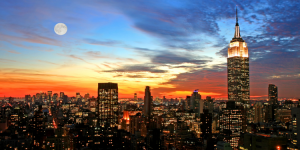
If you have decided to move abroad, you are probably looking for better career prospects, a more pleasant environment and a better quality of life for you and your family. But when choosing the right city, you have to take into account all the conveniences, such as public transport, proximity to your work, and possibly your children's school. So, have you considered the traffic congestion? Are you willing to spend stressful hours in endless traffic queues, trying to reach the office or get back home? The TomTom Traffic Index 2017 gives an insight into the most traffic congested cities in the world.
Mexico City takes the title of the most traffic congested city in the world followed by Bangkok, Jakarta, Chongquing, and Bucharest. Other cities, such as Istanbul, Chengdu, Rio de Janeiro, Tainan, and Beijing are also in the top 10.
The ranking is based on 2016 figures for 390 cities in 48 countries. According to the TomTom Traffic Index 2017, traffic jam in the world has experienced a 23% rise since 2008. However, trends are likely to vary from one continent to another. For example, North America has shown a 5% rise within one year, and Europe a 9% rise. In Asia and Oceania, a 12% rise was reported while in Africa the increase is at 15%.
Mexico is more congested than Los Angeles
Despite having a wide transportation network, including the subway, Mexico City is by far the most traffic congested city making it stressful to move around during peak hours. In fact, you are likely to spend around 66% additional time in its traffic jams. The city's population increase must account for this situation.
Los Angeles ranks 2nd, San Francisco 3rd, New York 5th, Miami 9th, and Portland 10th. As surprising as it may seem, Vancouver, Canada's greenest city, ranks 4th while Toronto ranks 8th. Costa Rican capital city, San Jose ranks 7th among the most traffic-congested cities in America.
Hungary and Russia: The worst traffic jams in Europe
Ranking 5th in the world, Bucharest has the heaviest traffic from all other European cities. You will be startled by the Romanian capital city, which is one of Eastern Europe's major industrial and transport hubs. More than a half of its roads are jammed during peak hours —roads that lead not only to other major cities but to neighbouring countries as well.
Moscow and St Petersburg, Russia's biggest cities, rank 2nd and 3rd in Europe. According to the Russian authorities, people are not ready to switch from their private cars to public transport making the small Russian roads tough to navigate. London, Marseille, Rome, Paris, Brussels, Manchester, and Athens are also well-known for their traffic congestion issues.
Bangkok and Jakarta more jammed than ever
It's no secret that Asia has a serious traffic congestion problem. Bangkok, for instance, ranks 2nd worldwide but 1st in Asia for its overcrowded streets despite the presence of a new and modern subway system along with many other modes of transport. Moving around the Thai capital city — both during and outside peak hours —can be a hustle. In the evening, expect to spend in your car twice the time that you spent in the morning to go to work.
Jakarta, the Indonesian capital city, is as bad as Bangkok due to the rising number of vehicles on the road, as well as the poor public transport forcing people to look for alternative ways to move. Over the years, riding a motorbike has become more than a trend — it's an obligation if you want to avoid the traffic jams. It's in Jakarta where you will find motorcycle taxis.
Many Chinese cities, namely Chongqing, Chengdu, Shenzhen, Beijing, Changsha, and Guangzhou are among the worst traffic congested cities in Asia along with Tinan — one of the biggest cities in Taiwan.
Brazil has the worst road traffic in South America
Surrounded by mountains, Rio de Janeiro is by far the most traffic congested city in South America. Despite recent development projects, it's still quite difficult to move around the city. The construction of new roads and the launch of new means of transport such as the train and subway have somehow reduced the problem, but not for all the Brazilian cities. Recife, Fortaleza, São Paulo, Belo Horizonte, and Brazilia experience high traffic congestion too. There is still a lot to do in Brazil to make movement from one place to another convenient for the citizens, and not the everyday battle it is today.
Sources:



















